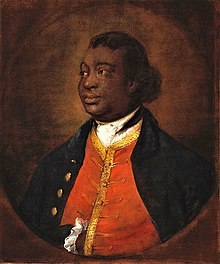Visiting the World of Ignatius Sancho
This spring, a team at Northeastern University launched a web project called “Ignatius Sancho’s London.”
The opening page explains:
The opening page explains:
This project showcases evidence about the life and times of Ignatius Sancho, one of the eighteenth century’s most important Black Britons. Born enslaved, Sancho came to occupy a unique position in London society that straddled the elite social worlds of the aristocracy and the everyday life of the city. These experiences are narrated in The Letters of the Late Ignatius Sancho, an African (1782), an amazing collection that reveals a man who was at once a husband, father, entrepreneur, musician, abolitionist, literary writer - and the first documented Black person to vote in a parliamentary election.An article about the project reports that one challenge for the professors and students working on it arose from a section of Sancho’s own book, published posthumously:
The interactive maps below reveal Sancho’s world as never before. It is a close-knit place, with Sancho observing events from his shop in the heart of Westminster and occupying a prominent role on London’s streets and social scene. But his life and letters show how Black people and voices travelled throughout the country, permeating society at every layer. The maps reveal a world connected to other transformative events shaping the life of the nation and the rest of the globe - from slavery and abolition to the rise of industry and empire…
The page-and-a-half-long biography has long been accepted as fact when it comes to Sancho’s life. However, the team found, the account is largely based on stereotypes and riddled with inaccuracies.Use the toggles in the upper right corner of the map to reveal the locations of events in Ignatius Sancho and his family’s lives, and the lives of other prominent black Londoners. Or read the storymap to learn more about him, the people and places he encountered, and the development of this project.
“The biography that was written at the time basically conformed to the genre of what an amazing Black life should have been,” [Prof. Olly] Ayers says.
That means the team had little foundation on which to build their timeline, and were instead tasked with disproving what was there. According to the biography, Sancho was born on a slave ship in the Middle Passage, but, Ayers says, the group found that “it’s highly unlikely.” They also question the portion of his biography that says he gambled away his inheritance, as he was still working for the Montagus during the period in question.


